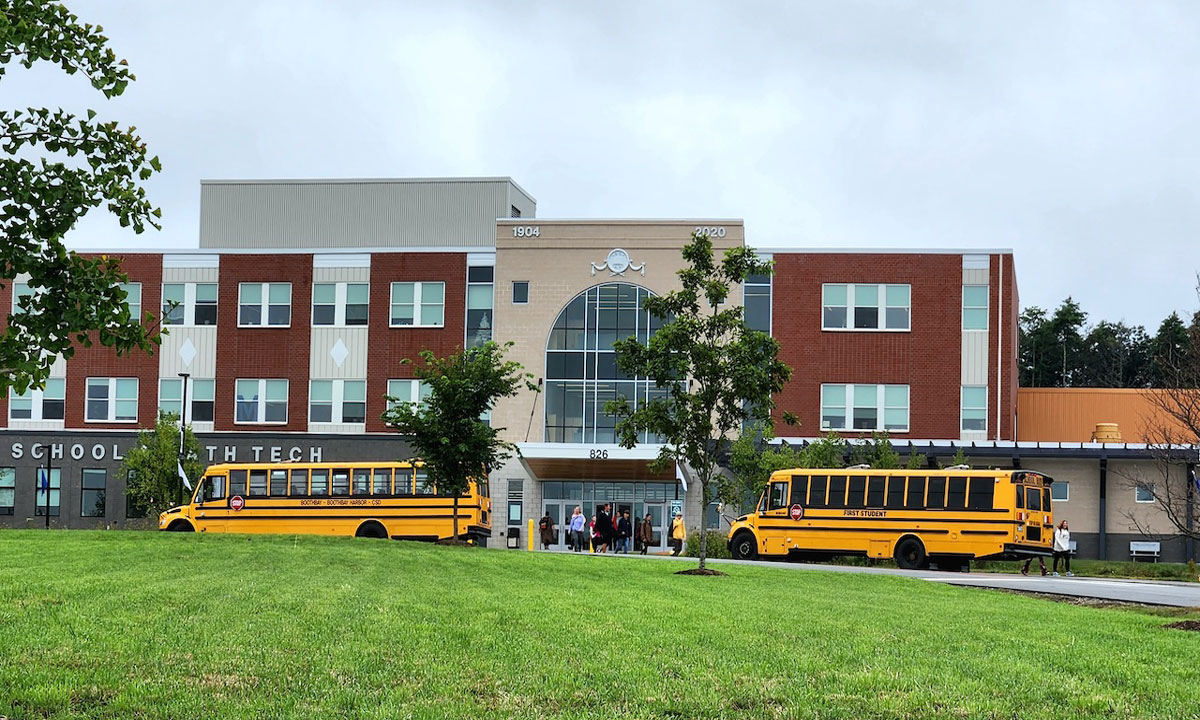Fewer Than Half of Alabama School Buses Have Air Conditioning
Alabama State Board of Education may ask Legislature for funds to make up gap.

Get stories like this delivered straight to your inbox. Sign up for The 74 Newsletter
The Alabama State Board of Education may ask the Alabama Legislature for money to add air conditioning to state school buses, most of which lack it.
At the September 14 Board meeting, members of the state Board considered asking for a one-time supplemental bill to add buses to districts most in need.
“One of the things we might encourage on top of the budget is to say, ‘You know what, we’d like to have another one-time flow of money into fleet renewal with a focus on getting rid of buses that don’t have air conditioning,’” said Eric Mackey, state superintendent.
Only 48% of buses in the state have air conditioning, according to Alabama State Department of Education data. Chad Carpenter, transportation specialist for the ALSDE, said in a phone interview that buses can get 20 degrees hotter than the air outside.
Carpenter compared school buses to passenger cars and said that, when he was a kid, his parents had options between buying cars with or without air conditioning. Many people bought cars without air conditioning because it was cheaper. Then, as technology advanced, air conditioning became cheaper and then standard.
“I wouldn’t be real surprised if air conditioning on school buses doesn’t become pretty standard in the next few years,” he said.
Last summer was the hottest season since 1880, according to NASA. Josh Willis, climate scientist and oceanographer at NASA’s Jet Propulsion Laboratory in Southern California, attributed the heat to long term warming and marine heat waves in combination with the weather pattern known as El Nino, in which the surface waters in central and eastern Pacific are warmer than usual.
Alabama’s hottest summer, until 2023, had been in 1883, according to Weather Underground.
Mackey said at the board meeting that all special education buses in the state are legally required to have air conditioning and that has been the law for some time.
“It’s not a new requirement,” he said. “I won’t say for sure there’s not one somewhere, but I’d be really surprised if there’s a special ed bus in the state that is not air conditioned.”
According to data provided by the Alabama State Department of Education, only a few school districts or charter schools had zero buses on route with air conditioning in the 2022-23 school year.
Daleville City, with 14 routes, has no buses on route with air conditioning. Elba City has four bus routes and no buses with air conditioning. Fairfield City has seven bus routes and no buses with air conditioning. Jacksonville City has 16 bus routes and no buses with air conditioning. Orange Beach City has three bus routes and no air conditioning on buses. Troy City has two bus routes and no buses with air conditioning. Tuscumbia City has zero buses with air conditioning and one bus route. Life Academy has three bus routes and no air conditioning.
Under Alabama law code, city school systems can purchase school buses, but county school systems must provide transportation. City school systems and charter schools are only required to offer transportation for students served by special education, according to Al.com.
Sen. Arthur Orr, R-Decatur, chair of the Senate Finance and Taxation Education committee, said that he has not heard any talk of supplemental funding for buses yet.
“At the legislative level, because we’re one of the last along the line of the appropriations process, it’s a little early to know whether that’s going to be a high priority request from the education community,” he said.
Mackey told board members they were able to get a one-time supplemental appropriation last year of around $130 million to buy new buses. Two districts, Wilcox County and Shelby County, were given the most funds to buy air conditioned buses, based on need. ALSDE data shows that Shelby has 18.73% of their buses air conditioned currently, or 59 on 319 bus routes. Wilcox has 62.16% of their buses air conditioned, or 23 on 37 bus routes.
Alabama Reflector is part of States Newsroom, a network of news bureaus supported by grants and a coalition of donors as a 501c(3) public charity. Alabama Reflector maintains editorial independence. Contact Editor Brian Lyman for questions: [email protected]. Follow Alabama Reflector on Facebook and Twitter.
Get stories like these delivered straight to your inbox. Sign up for The 74 Newsletter

;)